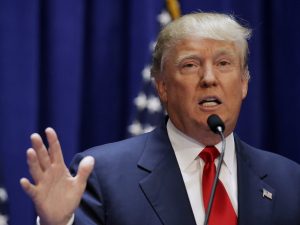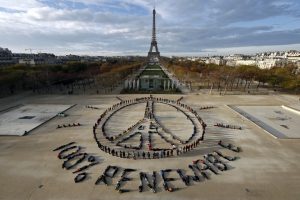
05-06-2017 (Important News Clippings)
To Download Click Here.
Here’s looking at you, India
As US withdraws from the Paris pact, it’s time the world recognised the real climate leaders

With the US withdrawal, that carbon space would shrink even more and faster. Latest evidence shows the EU’s emissions increased in 2015. Renewables supply 30 per cent of Germany’s electricity (a huge share) but coal and lignite account for 40 per cent. China proposed in January that coal consumption would rise to 4.1 billion tonnes in 2020, even as it stakes its claim to being a global renewable energy leader. None of this is unvarnished climate leadership.Prime Minister Narendra Modi reiterated India’s commitment to the Paris Agreement this week. Yet, there is still limited recognition of what India is already doing on the ground. It is an irony that China (the world’s largest greenhouse gas emitter) becomes the climate leader, by default. Climate leadership is not a crown to be worn by only one country. Countries will be judged by actions, not words, just as Trump said. India must emphasise (loudly) the five pillars of its climate leadership in action.
One, policy. In 2010 India’s National Solar Mission commenced with a target of installing 22,000 megawatts (MW). At the time, India’s total installed capacity was 17.8 MW. The world’s leading solar countries were Germany, Spain, Japan, US and Italy. India was at 10th place. In 2014, India asked itself a simple question: How big can we get on renewables? And by early 2015, India announced that by 2022, it would install 1,00,000 MW of solar, 60,000 MW of wind, 10,000 MW of small hydropower and 5,000 MW of biomass-based electricity capacity.There are sceptics, at home and abroad, who question whether the targets are too ambitious or whether India is capable of meeting them so soon. They might be right. After all, India is trying to do in less than a decade what took Germany more than two decades to achieve. But the targets have set a direction of travel, creating an attractive market, giving confidence to investors, even nudging policy planners to design an electricity system which could accommodate renewable energy, even if thermal power were squeezed out.
Two, programmes. In addition to policies, India has demonstrated its willingness and ability to scale programmes nationwide and rapidly, which serve to drive a shift towards cleaner fuels while also increasing energy access.
According to government data, 238 million LED lightbulbs have been distributed through an innovative programme of advanced market commitments, driving prices down from above INR 300 in 2014 to under INR 50 now. Another example: The Direct Benefit Transfer Scheme for LPG has become the world’s largest cash transfer programme, drawing in 176.3 million households, triggering both subsidy reform and access to cleaner cooking fuels.
Three, prices. Whereas many European countries pushed renewable energy through consumer subsidies, India adopted a reverse auction-based competitive bidding process for solar. That has meant that the lowest tariffs have dropped from INR 10.95 (USD 0.17) in December 2010 to INR 2.44 (USD 0.038) in May 2017. Competitive bidding in wind, introduced in February 2017, resulted in bids falling to INR 3.46. Can renewable energy prices fall any further? CEEW analysis shows that the cost of finance, rather than the cost of technology, accounts for the largest share of the tariffs — a challenge even greater in several developing countries. If India can find ways to reduce investor risks, and lower the cost of finance, it would hold lessons for others on how a combination of transparent bidding and publicly funded risk guarantees could drive a clean energy transition.
Four, productivity. Climate change is already impacting India, with increasing water stress and billions of dollars of lost agricultural output during this century. Could India increase agricultural production, while reducing water and energy intensity? Converting 15 per cent of India’s irrigation pumpsets to solar would create 20,000 MW of solar capacity. If various factors (cropping patterns, bank credit, etc.) align, CEEW’s analysis finds that 39 per cent of India’s districts would have a moderate to high potential of deploying solar pumps. Again, this has lessons for many other developing countries.
Five, partnerships. In November 2015, India and France launched the International Solar Alliance (ISA). The ISA plans to aggregate demand to drive prices down, scale up technologies currently available, and pool resources to invest in solar R&D. Thirty one countries have signed its Framework Agreement already. Among other initiatives, the ISA is seeking common risk mitigation instruments, to hedge risks across its membership and beyond in order to leverage limited public funds and crowd in large flows of private investment. We must acknowledge two realities. First, the rest of the world will have to continue to act on climate change, regardless of what the US does. Secondly, the mantle of climate leadership cannot be held by just one country.For its level of income and per capita emissions, India is doing disproportionately more than many of the larger polluters. It must speak confidently about its actions and its leadership for other countries.
We need Paris: on U.S pulling out of climate deal
The U.S. strikes a blow to the climate pact, but the rest of the world must step up the efforts

ट्रंप का फैसला
दो दिन बाद, सोमवार को हम विश्व पर्यावरण दिवस मनाएंगे। जगह-जगह जलसे और जुलूस होंगे। वैसे ही जैसे हर साल होते हैं। उसी तरह की औपचारिकताएं और उसी तरह का उत्साह। लेकिन एक चीज इस बार नहीं होगी, वह उम्मीद जो पूरी दुनिया काफी समय से बांध रही थी। डेढ़ साल पहले हुए पेरिस पर्यावरण समझौते ने यह आश्वासन दिया था दुनिया की सभी बड़ी ताकतें, यहां तक कि छोटे-छोटे देश भी तपती धरती पर राहत की छींटे डालने के लिए कमर कस रहे हैं। इस समझौते में एक तरफ अगर अमेरिका, चीन, यूरोपीय संघ और भारत जैसे देश थे तो दूसरी तरफ सीरिया और निकरागुआ जैसे देश भी। लेकिन आज अचानक ही अमेरिकी राष्ट्रपति डोनाल्ड ट्रंप ने यह उम्मीद तोड़ दी। उन्होंने पेरिस पर्यावरण समझौते से अमेरिका को अलग करने की घोषणा की तो डेढ़ साल पुराने पर्यावरण समझौते पर ही आशंका के बादल नहीं मंडराए बल्कि दो दशक से ज्ययादा के राजनयिक प्रयासों का वह सिलसिला भी खतरे में पड़ गया जिसने ऐसे किसी समझौते तक पहुंचने केलिए एड़ी चोटी का जोर लगा दिया था। बेशक, अमेरिका के अलग हो जाने से यह समझौता खत्म नहीं हुआ है, इससे जुड़े बाकी सभी देश अपने संकल्प दुहरा रहे हैं। लेकिन यह भी सच है कि अमेरिका के अलग हो जाने के बाद पेरिस समझौता अब पहले जैसा नहीं रहेगा। डोनाल्ड टं्रप का कहना है कि इससे अमेरिकी अर्थव्यवस्था को नुकसान पहुंच रहा है। यानी बात जब अर्थव्यवस्था और पर्यावरण की आई तो उन्होंने अर्थव्यवस्था को चुना। बाकी देश भी यही सोचते तो शायद यह समझौता होता भी नहीं। वैसे यह भी कहा जा रहा है कि यह सब अमेरिकी पेट्रोलियम कंपनियों के दबाव में किया गया। हालांकि गूगल और फेसबुक जैसी अमेरिकी कंपनियों ने ट्रंप के फैसले का विरोध किया है। इस फैसले का बाकी दुनिया से ज्यादा खुद अमेरिका में ही विरोध हो रहा है।
लेकिन डोनाल्ड ट्रंप ने अपनी बात अमेरिकी अर्थव्यवस्था और पेरिस समझौते तक ही सीमित नहीं रखा, अपने बड़बोलेपन में उन्होंने भारत और चीन को भी लपेट लिया। खासकर भारत को लेकर वे ज्यादा ही आक्रामक रहे। उन्होंने कहा कि भारत दुनिया का सबसे बड़ा प्रदूषण करने वाला देश है और वह अपने कोयला उत्पादन को दुगना करने जा रहा है, जबकि हमसें यह उम्मीद की जा रही है कि हम उसे का करें। ट्रंप का यह भाषण उनके ज्यादातर पिछले भाषणों की तरह ही गलत धारणाओं पर आधारित था। दुनिया में सबसे बड़ा प्रदूषण फैलाने वाला देश चीन है और उसके बाद खुद उन्हीं के देश अमेरिका का नंबर आता है। तीसरे नंबर पर यूरोपीय संघ है और चौथे नंबर पर भारत है। चीन ही नहीं अमेरिका को भी देखें तो भारत बहुत पीछे। प्रति व्यक्ति प्रदूषण के हिसाब से देंखें तो भारत इस फेहरिस्त के सबसे पीछे वाले देशों में ही दिखाई देगा। दूसरा सच यह है कि भारत ने अपनी कईं कोल परियोजनाओं को रद्द कर दिया है। एक और सच यह है कि पेरिस समझौते में भारत ने प्रदूषण कटौती का जो वादा किया था, वह उससे कहीं ज्यादा करने जा रहा है। पेरिस समझौते से खुद को अलग करना अमेरिका का अपना फैसला हो सकता है, लेकिन अमेरिकी राष्ट्रपति ने जिस तरह से तथ्यों को पेश किया वह आपत्तिजनक है।
अच्छी बात यह है कि अमेरिका को छोड़ दुनिया के बाकी देश अभी भी अपने संकल्प पर कायम हैं। उन्हें अभी भी यकीन है कि वे धरती के बढ़ते तापमान में दो डिग्री सेल्शियस तक की कमीं ले आएंगे। यह पहले भी आसान नहीं था, पर अब अमेरिका के अलग हो जाने की वजह से और कठिन हो गया है। इन देशों के पास एक बड़ा मकसद है और यह उम्मीद कि अंत में समझदारी जीतेगी।

